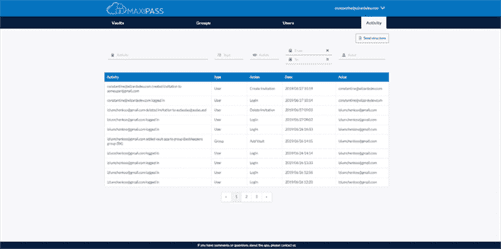Content
Hybrid cloud adoption requires users and IT staff to possess a specific set of technical skills. The expertise involved with public cloud infrastructure and services differs from that for a private data center, and the learning curve to close that skills gap can lead to human error. Organizations in highly regulated industries must follow restrictions on where data can reside, and this often means they cannot move certain workloads to the public cloud. This allows companies to meet regulatory requirements and still benefit from the cloud’s elasticity.

Each different cloud service has its perks that can add to the value of your company. A public cloud is an ideal solution for a Cloud Server for small businesses and medium businesses. Since the requirements may change over time, you may try out different models since a different cloud model may work better for you. The private cloud is pricier since you will need to pay for staff training, hardware, and software. So, the investment for the private cloud is more significant than the public cloud. Because the private cloud is managed in-house, it also means that private clouds are more high maintenance. You will be able to scale in a specific direction with private clouds according to the choice of the hardware.
What Is Public Cloud?
Non-critical tasks such as development and test workloads can be done using public cloud whereas critical tasks that are sensitive such as organization data handling are done using a private cloud. Benefits of both deployment models, as well as a community deployment model, are possible in a hybrid cloud hosting. The last of our four most popular cloud deployment models is the multi-cloud deployment model. A multi-cloud deployment model refers to one that leverages cloud computing services (storage, computing, applications, etc.) from more than a single cloud provider. Public deployment models in the cloud are perfect for organizations with growing and fluctuating demands.
Rather than taking a one-size-fits-all approach, IT decision-makers should select a cloud deployment model on a workload-by-workload basis. You can start by conducting an assessment that considers your application needs and dependencies, as well as your business goals and drivers. For example, some workloads may start in the cloud due to the need for a fast time to market but migrate to a private cloud to maximize control and TCO. There is no one-size-fits-all approach to picking a cloud deployment model. Instead, organizations must select a model based on workload-by-workload.
How Much Do It Certifications Cost?
Every model within a hybrid is a separate system, but they are all a part of the same architecture. Typically, all organizations in a community have the same security policies, application types, and legislative issues. Access to a virtual private platform is typically given through a secure connection (e.g., VPN). Access can also be restricted by the user’s physical location DevOps by employing firewalls and IP address whitelisting. Since cloud computing is completely web based, it can be accessed from anywhere and at any time. Cloud resources are available over the network in a manner that provide platform independent access to any type of clients. PaaS provides the runtime environment for applications, development and deployment tools, etc.
- High Maintenance – Since it is managed in-house, the maintenance costs also increase.
- […] Telescript is the revolutionary software technology that makes intelligent assistance possible.
- Linux cgroups and namespaces are the underlying Linux kernel technologies used to isolate, secure and manage the containers.
- The below picture summarises what we have learnt about cloud computing services.
To start with, there are many different models for deployment in cloud computing to choose from. Businesses today rely on a complex ecosystem of IT services and applications—each one with its own set of requirements for privacy, availability, and cost. But it’s how your business uses the cloud that can give you a real critical advantage. These are made available either over a public internet connection or a dedicated network. The public cloud infrastructure consists of on-demand computing, provisions for self-servicing, broad network access, resource pooling, and more.
Common Network Issues And How To Resolve Them Fast
Simply put, the cloud service model defines which layer of service you manage and which layer the cloud service provider manages. All the models have their pros and cons, so let’s discuss all three so you can decide which one is best for you. Also, we need to mention here that you don’t need to pick one service model for everything.
Hybrid is becoming more popular in my company’s industry, but the barrier of entry is kind of high, technically that is. However, the hybrid deployment model only makes sense if companies can split their data into mission-critical and non-sensitive. Furthermore, it is important to describe the termination processes in the contract that includes the secure and complete erasure of all customer data and process information . The CSP cloud deployment model has to ensure that no data can be retrieved in any way from any media after termination of the cloud service. Nondisclosure agreements also for the time after service provisioning are essential and have to be part of the contract with the CSP. •A customer or tenant can achieve greater security control over more resources when moving from a Public cloud to a community cloud and again from a community cloud to a Private cloud.
Mobile “backend” As A Service Mbaas
Since AWS maintains the hardware and software-based networks vital for the services application, there are no huge upfront investments that would typically be needed. Whether it is an all-inclusive startup, data-reliant application, or critical business operation, the AWS cloud provides instant access to innovative resources. Applications in the cloud have either been created in the cloud or have been migrated from an existing on-premises infrastructure to take advantage of the benefits of cloud computing. In summary, when running a private cloud on-premises, companies have more visibility and control over the physical security controls and data storage. However, these come at the expense of substantial upfront capital expenditure and operating costs. Third party hosted private clouds potentially alleviate these, as companies will not be required to make upfront capital expenses for hardware, nor need to have on-site personnel to run and maintain the hardware. From a technical standpoint, both private and public cloud generally leverage the same cloud computing principles and concepts.
Cloud computing is often the best option for businesses of all sizes. Check this article to observe four main cloud deployment models and their characteristics. https://t.co/A6AeKLPFdn
— Mad Devs (@MadDevsIO) December 9, 2021
The time-efficient benefit of cloud scalability also means faster time to market, more business flexibility, and adaptability, as adding new resources doesn’t take as much time as it used to. Emerging approaches for managing elasticity include the use of machine learning techniques to propose efficient elasticity models. Cloud deployment models refer to the way resources are provided in the cloud. On the other hand, cloud service models satisfy the requirements of various businesses or organizations as Public, Private, Hybrid, and Community Cloud.
Salesforce Service Cloud
It has evolved from personal cloud storage to organizations moving their entire data to the cloud. The cloud can be customized for a specific “community” like a group of sister companies in the financial sector. Such a community’s tenants would all require the same kind of specific security application. The VPN makes it simple to connect the public cloud to the private network.

The OpenStack project intended to help organizations offering cloud-computing services running on standard hardware. The early code came from NASA’s Nebula platform as well as from Rackspace’s Cloud Files platform.
Cloud Deployment Models With Examples: Public, Private, Community, Hybrid
For the migration to a CSP under consideration that a remigration to another IT-Service provisioning must be possible, a Five-Phase-Model of secure cloud migration is introduced. Check out ourself-paced courses designed for students of grades I-XII.
Addressing the Low-Code Security Elephant in the Room – Dark Reading
Addressing the Low-Code Security Elephant in the Room.
Posted: Thu, 18 Nov 2021 08:00:00 GMT [source]
The public cloud deployment model, as the name suggests, is accessible by the public. A public cloud deployment model is great for companies that have low-security concerns. It combines a private cloud with one or more public cloud services. It is defined as a Private Cloud environment at the consumer’s premises as well as Public Cloud infrastructure that the consumer uses. This type of cloud is simply the combination of two or more cloud servers, i.e. private, public or community combined in a single architecture, but which remains a single individual unit. Important data is generally preferred in a private cloud and public domain support services, such as search, email, blogs, CRM, etc.
Cloud Tutorial
There are service and licensing limitations because users are offered only general services that are insufficient for complex IT tasks. Software as a Service is provided over the internet and requires no prior installation. The services can be availed from any part of the world at a minimal per-month fee. Setup Benefits – The protocols and configuration of a community cloud must align with industry standards, allowing customers to work much more efficiently. Understanding workload performance, security, integration, and data volume is critical in making a cloud hosting decision.
The influence of Cloud Computing solutions is increasing within enterprises with every day. It is becoming increasingly difficult for enterprises to choose the optimal cloud deployment model.
Learn more https://t.co/kpFyBpukDW pic.twitter.com/r6snxTX61L
— dinCloud (@dinCloud) December 14, 2021
It signifies how servers are deployed and provisioned over the internet so that various organizations and companies can access these servers without configuring them. The cloud deployment model refers to applications that are deployed and run entirely in the cloud.